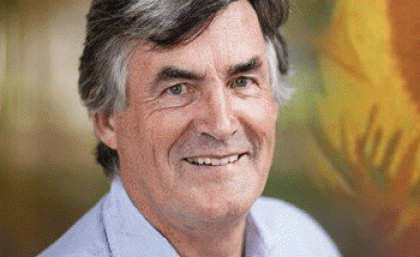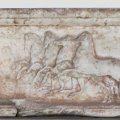
A minute paint sample from Vincent van Gogh’s “Sunflowers” painting in Amsterdam is under the microscope at The University of Queensland in Brisbane.
The tiny sample from the Van Gogh Museum is being examined at the University’s Centre for Microscopy and Microanalysis (CMM), through high resolution 3D imaging.
UQ’s Professor John Drennan said the analysis was designed to improve understanding of the ageing characteristics of significant artworks in a bid to improve conservation techniques.
“The recently installed Gatan 3-view/Zeiss microscope system will examine cross sections of the paint samples,” Professor Drennan said.
“The instrument consists of a diamond blade operating inside a high-resolution scanning electron microscope. The blade cuts precisely controlled sections which are imaged sequentially so that a three-dimensional image can be constructed,” he said.
The instrument is usually used to section biological samples. This is the first time that it has been used on materials such as paint sections.
Professor Drennan has been working with Queensland Art Gallery Gallery of Modern Art (QAGOMA) Conservator of Paintings Gillian Osmond, and the Centre for Microscopy and Microanalysis’s Robyn Webb and Ron Rasch, using the Gatan 3-View/Zeiss to examine paint conservation issues involving significant Australian artworks.
Professor Drennan showed 3D images and video from that work to members of the University of Amsterdam’s Paint Alterations in Time (PAinT) team while on sabbatical in The Netherlands.
“Dr Katrien Keune and Dr Annelies van Loon were so impressed with the quality of the images that they suggested, in collaboration with Van Gogh Museum Head Conservator Dr Ella Hendriks, that it would be worth attempting to build a 3D image of the paint layers in Van Gogh’s Sunflowers,” Professor Drennan said.
He said pin-head-sized samples previously extracted for other studies were now in Brisbane, and Gillian Osmond would oversee the sectioning process.
“The aim is to build a clear three-dimensional map of the various paint layers that van Gogh used in this iconic painting,” Professor Drennan said.
“We hope this analysis will add valuable information to the body of knowledge that the Dutch conservators use in their continual monitoring and preservation of these important art works.”
Professor Drennan, who works in UQ’s Faculty of Science and is an Affiliate Group Leader at UQ’s Australian Institute for Bioengineering and Nanotechnology , stressed that the miniscule samples had been taken from the edge of the canvas or along cracks in the painting to ensure there was no damage to the artwork.
Media: John Drennan j.drennan@uq.edu.au; Robyn Webb, 0734463895, r.webb1@uq.edu.au; Ruth Neale, 0733463965, r.neale1@uq.edu.au.
.jpg)



